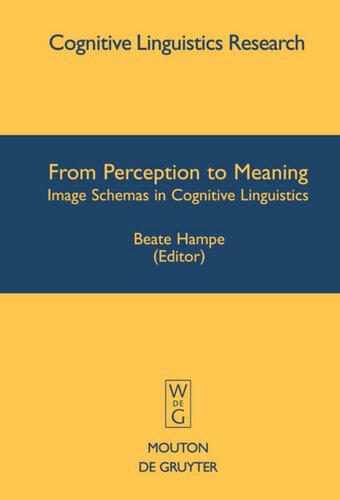

Most ebook files are in PDF format, so you can easily read them using various software such as Foxit Reader or directly on the Google Chrome browser.
Some ebook files are released by publishers in other formats such as .awz, .mobi, .epub, .fb2, etc. You may need to install specific software to read these formats on mobile/PC, such as Calibre.
Please read the tutorial at this link: https://ebookbell.com/faq
We offer FREE conversion to the popular formats you request; however, this may take some time. Therefore, right after payment, please email us, and we will try to provide the service as quickly as possible.
For some exceptional file formats or broken links (if any), please refrain from opening any disputes. Instead, email us first, and we will try to assist within a maximum of 6 hours.
EbookBell Team

4.1
50 reviewsThe 1987 landmark publications by G. Lakoff and M. Johnson made image schema one of the cornerstone concepts of the emerging experientialist paradigm of Cognitive Linguistics, a framework founded upon the rejection of the mind-body dichotomy and stressing the fundamentally embodied nature of meaning, imagination and reason - hence language. Conceived of as the pre-linguistic, dynamic and highly schematic gestalts arising directly from motor movement, object manipulation, and perceptual interaction, image schemas served to anchor abstract reasoning and imagination to sensori-motor patterns in the conceptual theory of metaphor.
Being itself informed by preceding crosslinguistic work on semantic primitives in the linguistic representations of spatial relations (carried out by L. Talmy, R. Langacker, and others), the notion has inspired a large amount of subsequent research and debate on diverse issues ranging from the meaning, structure and acquisition of natural languages to the embodied mind itself.
From Perception to Meaning is the first survey of current image-schema theory and offers a collection of original and innovative essays by leading scholars, many of whom have shaped the theory from the very beginning. The edition unites essays on major issues in recent research on image-schemas - from aspects of their definition and linguistic formalization, their psychological status and neural grounding to their role as semantic universals and primitives in language acquisition. The book will thus not only be welcomed by linguists of a cognitive orientation, but will prove relevant to philosophers, psychologists, and anthropologists interested in language, and indeed to anyone studying the embodied mind.